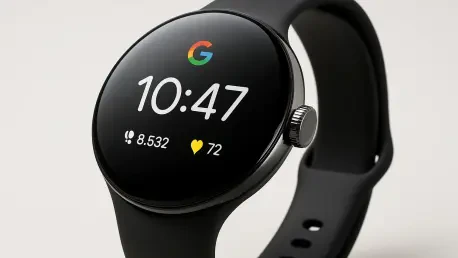I’m thrilled to sit down with Oscar Vail, a renowned technology expert with a deep passion for cutting-edge innovations in fields like quantum computing, robotics, and open-source projects. Today, we’re diving into the exciting world of wearable tech, specifically focusing on the recently unveiled Google Pixel Watch 4. With his finger on the pulse of tech advancements, Oscar is the perfect person to break down what makes this device a potential game-changer for 2025. In our conversation, we’ll explore the watch’s standout design elements, its impressive battery improvements, the innovative charging dock, and its forward-thinking approach to sustainability. Let’s get started!
Can you share your thoughts on what sets the Google Pixel Watch 4 apart from its predecessors in the Pixel Watch lineup?
I think the Pixel Watch 4 represents a significant leap forward for the series. The design and hardware upgrades, especially the domed display, give it a fresh, distinctive look that feels more futuristic than earlier models. On top of that, the software has been revamped to align with the latest visual language from Google, making the interface more intuitive. But what really stands out is the focus on user pain points—like battery life jumping to 30 hours with Always-on Display. It’s clear they’ve listened to feedback and pushed the envelope to make this a more practical and stylish device.
How does the domed display design of the Pixel Watch 4 enhance the overall user experience?
The domed display is a brilliant move. It’s not just about aesthetics; it fundamentally changes how you interact with the watch. Since the screen curves outward, it’s much easier to catch notifications or stats with a quick sideways glance—no need to awkwardly tilt your wrist. Plus, with a 16% smaller bezel and 10% more screen area, everything feels more immersive. Apps and features are displayed with more breathing room, making the interface less cluttered and more engaging. It’s a small tweak with a big impact on usability.
Battery life has long been a pain point for smartwatches. What’s your take on how the Pixel Watch 4 tackles this issue?
Battery life is often the Achilles’ heel of smartwatches, and I’m impressed with how the Pixel Watch 4 addresses it. Going from 24 hours on the Pixel Watch 3 to 30 hours with Always-on Display enabled is a meaningful upgrade. It shows they’ve optimized both hardware and software to squeeze out more efficiency. For users who disable Always-on Display, early reports suggest you could get a couple of days of use, which is huge for anyone who doesn’t want to charge daily. It’s a step toward making smartwatches feel less like a chore to maintain.
Let’s talk about the new charging dock. How does this redesign transform the Pixel Watch 4 into a smart alarm clock?
The charging dock is one of those ideas that feels so obvious once you see it. By switching to side-charging, they’ve allowed the watch to sit horizontally in the dock, reorienting the display to mimic a classic bedside alarm clock. It’s a clever use of space—your watch isn’t just charging, it’s doubling as a functional nightstand device with time, alarms, and notifications right there. The fast charging, reportedly hitting 50% in just 15 minutes, also means you’re not tethered to the dock for long. It’s a thoughtful touch that blends practicality with innovation.
Sustainability is a growing concern in tech. What’s the significance of the Pixel Watch 4 being designed with replaceable parts?
I’m really excited about this feature because it’s a bold statement on sustainability. Designing the Pixel Watch 4 to be easily disassembled for repairs—whether it’s swapping out a battery or screen—extends the device’s lifespan and cuts down on e-waste. It’s a direct challenge to the throwaway culture in consumer tech. Google’s commitment to providing replacement parts for two years after the product’s lifecycle ends is also a big win. It shows they’re not just paying lip service to eco-friendliness; they’re building a framework for longer-lasting devices.
What’s your forecast for the future of wearable tech, especially with innovations like those in the Pixel Watch 4 setting the tone?
I think we’re at a turning point for wearable tech. Devices like the Pixel Watch 4 are showing that companies can balance cutting-edge features with practical concerns like battery life and sustainability. My forecast is that we’ll see more emphasis on modular designs and longer-lasting products as consumers demand greener tech. On the innovation front, I expect displays and form factors to keep evolving—maybe even more interactive or flexible screens. And with AI integration growing, wearables could become even smarter, acting as true personal assistants. It’s an exciting space to watch, and I think the Pixel Watch 4 is just the beginning of some major shifts.









